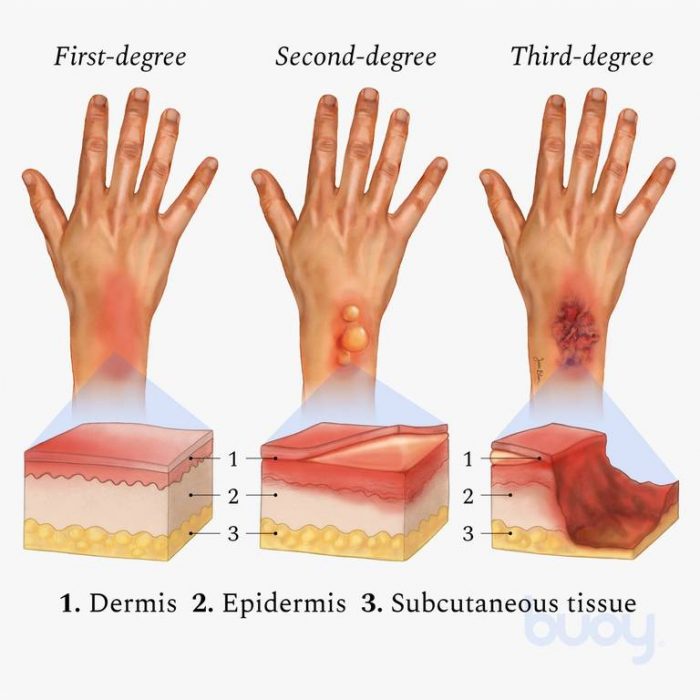
Burns are a painful injury that can be caused by fire, electricity, chemicals and the sun, among other things. There are different types of burns based on how much skin was affected by the burn and their depth. Some of these burns require immediate medical treatment, but some can be treated at home. Here’s what you need to know about each type of burn:
Burn Treatments for First Degree Burns
First degree burns are the least severe and can be treated at home. They have an outer layer of skin that has been damaged, but there is still no blistering or other signs of damage to deeper layers of skin. First degree burns will appear red, with some swelling and pain. These types of burns are most common on hands and feet, but can occur anywhere on the body. If you think you have a first degree burn: If the area is small enough, apply a cool compress or ice pack for up to 20 minutes at a time (take breaks if needed). Repeat as often as possible for the first 24 hours after injury. Do not apply ice continuously; check with your healthcare provider before doing so if you’re unsure whether this type of treatment will work well for you. For larger areas such as arms or legs that cannot fit under an ice pack comfortably, use cool running water instead (as cold as tolerable) while also taking breaks every 10 minutes when possible during treatment periods lasting less than 20 minutes each time.[2]
Burn Treatments for Second Degree Burns
If you suspect your burn is second degree, seek medical attention immediately. If you do not have access to a doctor or medical professional, here are some tips for treating second degree burns at home: Apply cold compresses to the affected area. You can use a bag of frozen vegetables or any other type of cool compress like ice cubes wrapped in a cloth. Apply this for at least 10 minutes to reduce pain and swelling. Do not apply ice directly on your skin because it may cause further damage and lead to hypothermia (low body temperature). If the burn is large enough that it covers an arm or leg, elevate the limb above heart level as much as possible for 24 hours after applying an antibiotic ointment or aloe vera gel over it (these products will help prevent infection). If there is no discomfort at all when moving your hand or foot around then you should be fine but if there’s any pain then keep elevating until that goes away as well!
Burn Treatments for Third Degree Burns
Third degree burns are the most serious type of burn, and require immediate medical attention. If you have a third degree burn, you should seek immediate medical treatment—even if it’s a small burn that doesn’t seem like it will do any lasting damage. If you have a third degree burn on your face or hands, seek immediate medical attention. This is especially important if you’ve experienced trauma with the area of the body that was burned (for example: if your hand was struck by a hammer). In these cases, there may be deeper tissue damage than meets the eye and this can lead to permanent scarring or nerve damage.
Hopefully, we have helped you understand the differences between these three types of burns and how they should be treated.
